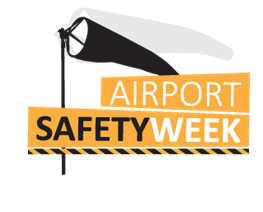Runway incursions are an ongoing safety concern at airports. This incident shows just how easily they can happen, even while following procedures and carrying out routine duties.

The incident occurred shortly after an ATR 72 aircraft, operated by Virgin Australia Regional Airlines, broadcast on the common traffic advisory frequency (CTAF), that they ‘should be turning straight in for a landing runway 16’.
At about the same time, the aerodrome reporting officer (ARO) was asked by airport ground staff to conduct a runway inspection, following a birdstrike report of another aircraft that just landed. He entered a safety vehicle, which was fitted with a flashing orange beacon, and then drove to the holding point for runway 16/34.
The ARO broadcast on the CTAF advising that the vehicle was preparing to enter the runway for a runway inspection. The ARO heard a beep-back, confirming that he had made the call on the correct frequency, but no other response was heard on the CTAF.
...the ARO heard ‘car vacate’ broadcast on the CTAF and sighted the aircraft landing on the far end of the runway in the rear-view mirror of the vehicle.
The CTAF broadcasts an automatic voice-back response if no calls have been made on the frequency for five minutes; otherwise a beep-back is broadcast. The ARO assumed that he received a beep-back rather than a voice-back, due to the calls made by the crew of the aircraft that had just landed.
He then conducted a thorough lookout for aircraft approaching and did not sight any. The ARO broadcast that he was entering the runway and commenced driving north along the runway. When at the northern threshold, the vehicle turned and drove south along the runway with no evidence of a birdstrike found.
The crew of the ATR 72 did not hear either broadcast from the ARO. The aircraft was in cloud during the approach, with the cloud base at about 2,600 feet and encountered some turbulence on final, with a crosswind of about 12 kt. The captain looked up out of the cockpit along the runway and sighted the safety vehicle on the white runway aiming point markings near the far end of the runway and immediately broadcast ‘car vacate’. (The first officer sighted the orange beacon when at about 10 feet AGL, but was not immediately aware that it indicated the presence of a vehicle on the runway).
When about 100 m from the southern end of the runway, facing south, the ARO heard ‘car vacate’ broadcast on the CTAF and sighted the aircraft landing on the far end of the runway in the rear-view mirror of the vehicle.
The ARO immediately drove the vehicle off the runway and once clear, broadcast that the safety vehicle had now vacated all runways.
The ARO had a handheld VHF radio and a VHF radio was fitted in the safety vehicle. When in the vehicle, the ARO switched off the handheld radio to avoid interference with the fitted radio. The ARO could alternatively be contacted via mobile phone. The ARO also had a UHF radio which was used to communicate with aerodrome ground staff. All normal communications between flight crew and the ARO are on the CTAF via VHF radio. The ARO reported that inside the terminal building there was a ‘black spot’ for VHF reception.
The ATSB was provided with the CTAF recordings. Both of the broadcasts made by the ARO included the standard phraseology of prefixing and suffixing each call with ‘Traffic Moranbah’ to alert aircraft to the location of the caller.
The ATSB’s investigation found that the ARO was in the airport compound for the duration of the calls broadcast at 25 NM, 10 NM and overhead by the aircraft. This meant he was not aware the aircraft was in the vicinity. The recording of the CTAF obtained by the ATSB verified all calls made by the crew of the aircraft and the ARO. The ARO calls were audible but less clear than the aircraft calls; however it could not be determined why the crew of the aircraft did not hear the ARO broadcasts. There was no requirement for the ARO to maintain a continuous listening watch on the CTAF. Six minutes elapsed between the broadcast from the captain of the aircraft overhead the aerodrome, to the call to the car to vacate.
Read the report: Runway incursion involving an ATR 72, VH-FVI and a vehicle, Moranbah Airport, Queensland, on 5 March 2014
Safety message
Safety around non-controlled aerodromes is one of the ATSB’s major safety priorities. Research conducted by the ATSB found that, between 2003 and 2008, 32 runway incursions were recorded at non-controlled aerodromes. Broadcasting on and monitoring of the CTAF is the key way for pilots to establish situational and traffic awareness. The ATSB Limitations of the see-and-avoid principle study found that the effectiveness of a search for other traffic is eight times greater when a radio is used effectively in combination with a visual lookout, than when no radio is used. A pilot's guide to staying safe in the vicinity of non-controlled aerodromes is also a good source of information.


